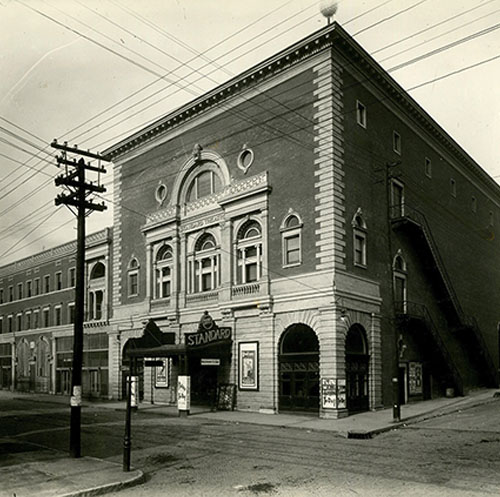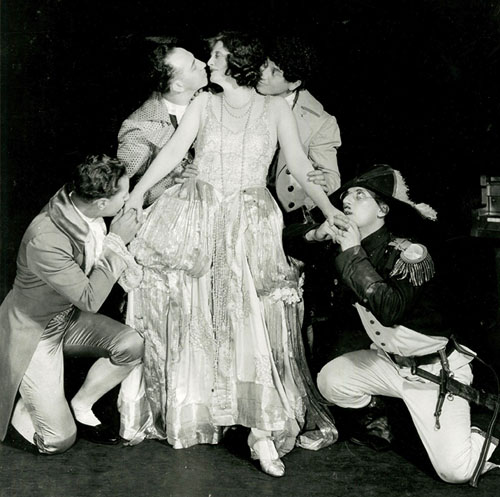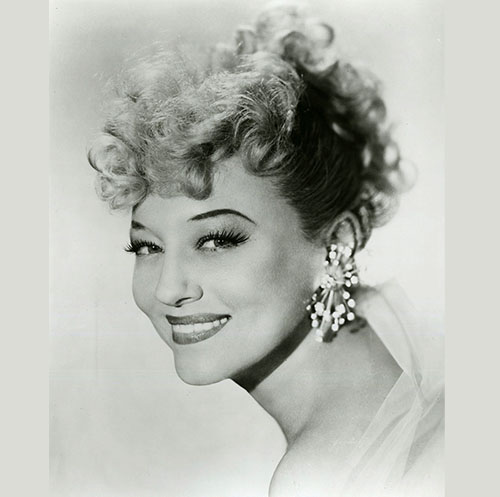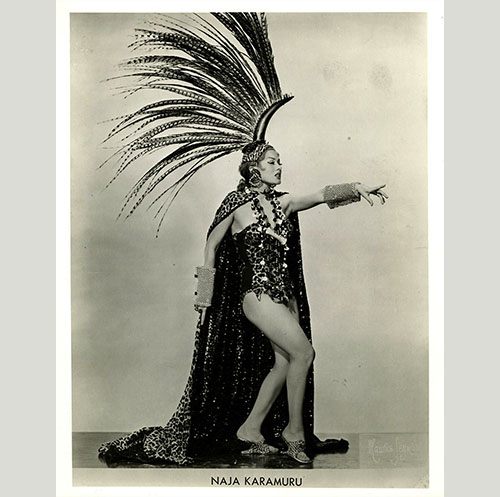New Folly Theater Collection Now Open to Researchers
However, the historic material that the theater put in the Library’s care in 2014 is largely business-related, and much of it dates to the 1980s.
Joanna Marsh, a librarian/archivist in the Missouri Valley Room, recently completed the more than three-year project of archiving the artifacts into over 300 boxes.
“The collection is kind of split in two sections,” says Marsh. “There’s the vintage portion, the first half of the 20th century. Then, after the (theater’s) restoration in the 1980s, there's more recent materials, which is probably the bulk of the collection.”


So, the archive isn’t all burlesque playbills and historic photos of the Marx Brothers, who performed at the location in 1923 while it was called Shubert’s Missouri Theater.
Still, Marsh says those photos are included – and they were fun to learn about. Many of the performers were lesser known than the Marx Brothers, so when she’d run across unlabeled or illegibly labeled photos, she’d switch into research mode to see if she could identify them.
“I spent a lot of time looking through the Kansas City Star database – usually they advertised the shows in the paper – to kind of double-check that this performer was supposed to be there on this date,” Marsh explains.
And when she did positively identify a performer or locate a bit of information about a particular performance, she’d keep digging for more details.
“Once I started delving into the history of a specific person was when I got really fascinated, like Sally Rand. I had no idea she was actually a local. She danced with a fan; that was her thing,” Marsh says.
Rand, born Helen Beck, was from Elkton, Missouri, about an hour north of Springfield, but spent parts of her life in Kansas City. She attended Central High School for a while. Her career fit solidly into the world of burlesque, even years after dancing near-nude with ostrich feathers was no longer in fashion.
The Folly Collection includes photos of Rand from 1910 through 1973, though much of her work as an adult in Kansas City took place after the Depression when the theater reopened as the Folly Burlesque in 1941. According to the collection, during World War II, the theater held as many as five shows each day for soldiers stopping over at Union Station.


At times, Marsh was unable to find any information about a person in a photo. However, Marsh expects that at some point a subject-matter expert conducting research in the Missouri Valley Room will fill in at least a few of the blanks.
Kelly Dougherty, the Folly Theater’s marketing manager, says she loves that the public will have access to these primary documents and photos. She also is certain that seemingly less tantalizing archival items can be as fascinating as materials featuring fan dancers.
For example, people can learn the standard cost of a ticket during various years or find the terms of a performer’s contract.
“If there was a piece of administrative history based on that, I think that's really important to know, so we can see how much the arts have cost or lost,” Dougherty says. How would a performer’s fee 100 years ago compare to a performer’s fee now? What percentage of a person’s paycheck went to the price of a ticket 100 years ago compared to now?
Additionally, archival materials offer a window into what was going on in society at the time.
Dougherty says that during the years when the theater was called the Century (1901-1922), world heavyweight boxing champion Jack Johnson fought in the space.
Johnson was a Black boxer, so Dougherty says that when he fought in Kansas City, he was barred from staying in most hotels. However, Joseph Donegan, the theater’s owner at the time, also owned the nearby Edward Hotel.
“So, they would sneak him from the Folly to the hotel next door, and [Johnson] and his wife would stay in the master suite of the owner’s place. There's still a little [side] door in the theater that you can see,” Dougherty says.
She thinks that making the archive available to the public could be a great help to the arts community, particularly during the pandemic when so many performance venues have struggled.
“It shows people that we love the arts, but it's also difficult at the same time,” Dougherty says. She sees the story as one of rising from the ashes – in the Folly’s case, literally, during one incarnation. A fire destroyed much of the theater in 1920.
She adds, “The arts are always a battle, in a sense, but it's one that we continue to win and we continue to move forward with. The war is never won; it's a continuous process for us.”
The Library recommends that anyone who’d like to visit the collection make an appointment, though an appointment is not required. In either case, Marsh urges visitors to first read the finding aid, a formal list of what’s included, to identify a specific item or time period of interest.